
When To Switch Cannabis From Vegetative To Flowering Phase
Properly switching cannabis plants from the vegetative to the flowering phase is a major step in reaching a successful harvest. There are many factors that play into when and how you should do it, each of which deserve your careful consideration. This guide should make things easier.
When you’re growing cannabis plants, there are few moments more important than the switch from the vegetative to the flowering stage. As it progresses into that final phase before harvest, your plant will make all the preparations it needs to offer you the most bud possible. In turn, making sure your plants make that transition smoothly (and at the right time) is nothing short of vital.
Plants normally do this on their own, but indoor growers have to help them along the way. It's not too difficult, but there are a few factors you should keep in mind. We'll explain all of that and more as we continue on.
What Does It Mean to Switch From Veg to Flower?
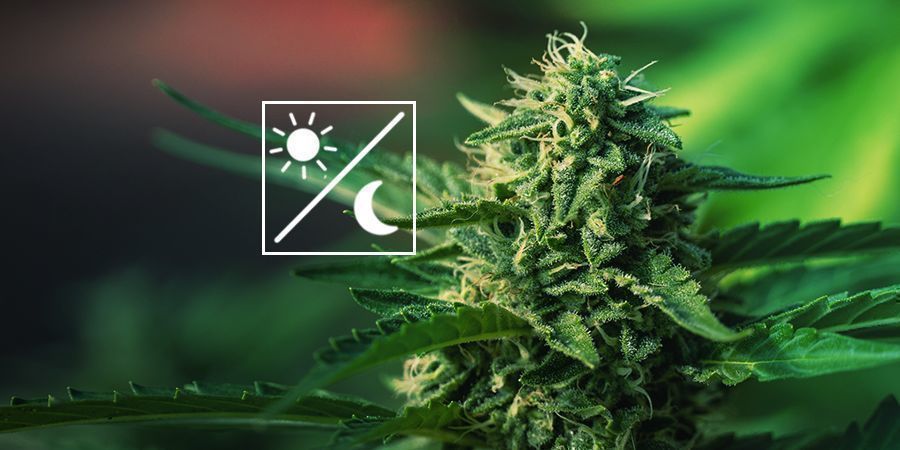
To start, let's clarify what we're talking about when we discuss the vegetative–flowering switch. See, the growth of cannabis plants is divided into four stages: the germination and seedling stages come first, followed by what we're focusing on today: the vegetative and flowering stages. The former sees the leaves and roots growing quickly to capture more sunlight and nutrients, while the latter is when the all-important buds begin to take form.
How do cannabis plants know when to do this, though? Just as they rely on the sun for energy, they also rely on it to signal the changing of seasons. As the sun sets sooner, and the plants receive less light in turn, they understand it's time to fully mature and let their buds grow.
They don't need much help outside, but things are different when you're in a grow room where you control the light. Here, your plants depend on you shifting the light schedule to move on from the vegetative stage. As they spend less time in the light, they can begin flowering in peace. Specifically, plants need 12 hours of darkness to initiate and stay in bloom indoors.
Should You Flip the Lighting Schedule For Autoflowers Too?
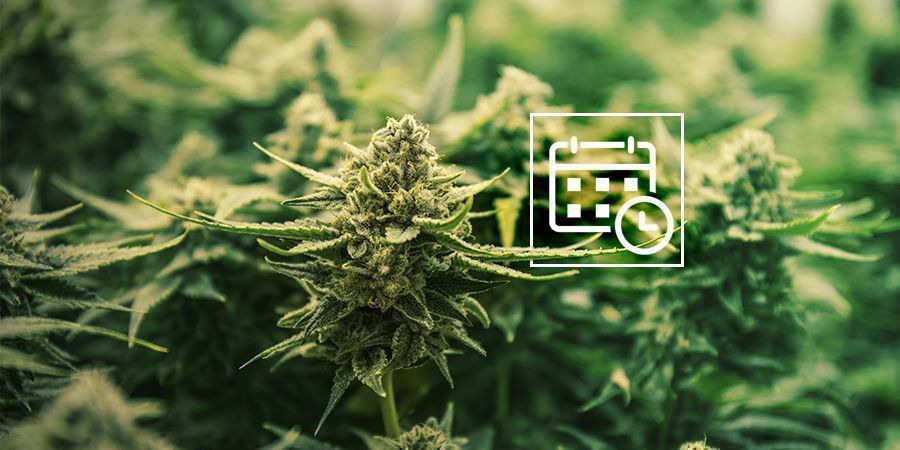
It's around now when we should mention that a cannabis plant is given a label depending on whether or not it relies on this light shift to begin the flowering stage. Specifically, it's distinguished as either a photoperiod or autoflowering strain. The former does rely on a change in the light schedule, while the latter flowers according to age.
So, as you could likely guess, there isn't much benefit to flipping the lighting schedule for an autoflowering plant: They won't take too long to make that transition themselves! Most autos enter bloom after 3–4 weeks of veg.
What Factors to Take Into Account When Flipping?
Now, we wish the timing of this switch only depended on when we want our plants to start flowering, but that isn't always the case. In truth, there are a variety of factors at play, including the height of your plant, the state of its roots, the genetics it carries, and the growing techniques applied to it. We'll examine how each affects when our cannabis plants can enter the flowering stage.
Height
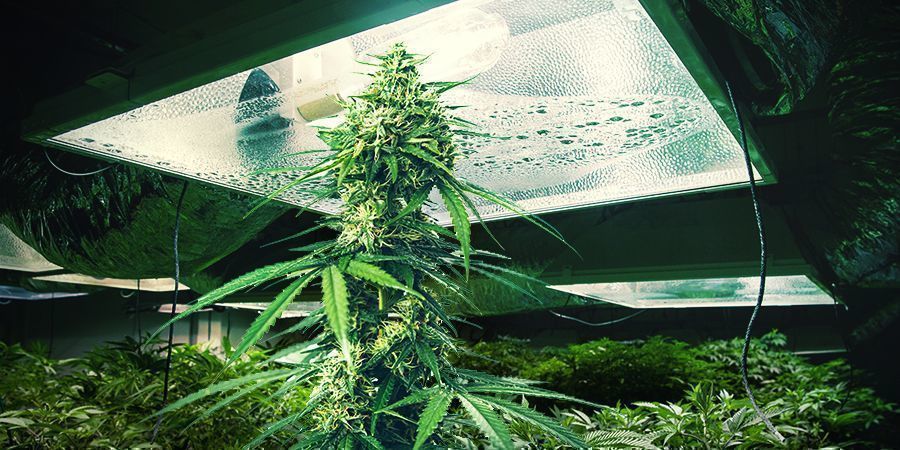
As mentioned, the vegetative stage is when a plant begins to climb to its potential peak height. As long as you keep it in that stage, it'll keep growing taller (up to a point), so you have to consider how much vertical space you have. Growers who let them keep climbing may find their plants bumping into the lights or ceiling and getting damaged. To avoid any potential issues, make a note of your strain's potential maximum height, and make the switch sooner rather than later if your plants are on the taller end.
Genetics
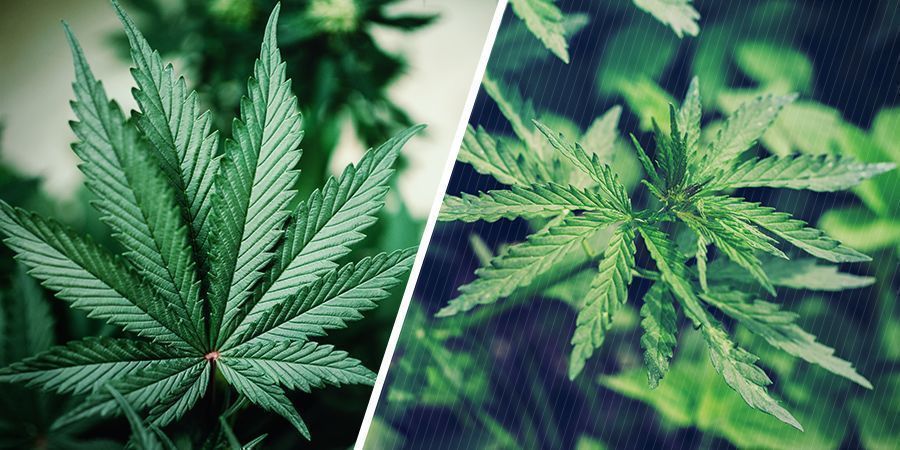
Going deeper, the maximum height of your plant is just one of many specific factors determined by its genetics. Cannabis genetics are generally split into two main categories: indica and sativa. Indica strains are usually shorter and more stout, and will grow in height by 25–50% between the beginning of flowering and harvest. Sativas, however, get quite tall, and the early flowering stage gives them time to potentially double their height. So, generally, you can leave an indica plant in the vegetative stage longer than a sativa.
As far as specific strains, you can also look up what other growers have said about the specific seeds you're growing. More than likely, lots of growers, including those selling the seeds, have reported how much time their plants spent in each stage. Get an average of all the numbers you see, and keep that in mind as you’re growing.
Robust Root Network
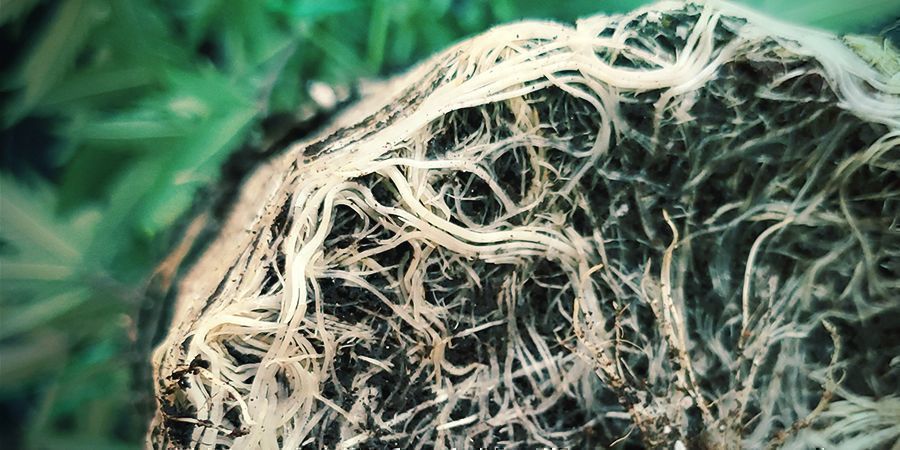
Along with growing leaves and getting taller, plants will also spend the vegetative stage developing a robust root network. When the roots are able to grow long without bunching up, the plant they're attached to is able to enjoy all the nutrients it needs and won't have to compromise on growth.
To ensure this network develops, you need to be sure you don't rush your plant to begin flowering before it's ready. Once the light shifts, plants will soon start focusing on bud production as opposed to root development. If they were cut off too soon, the potential of your yield is cut down in equal proportion.
There's no exact science to timing this, as you can't really go into the soil and check. The best estimate you'll be able to find is the average vegetation time for a given strain.
Advanced Grow Techniques
Even if several growers are raising the same seeds in the same sort of environment, the use of certain advanced growing techniques can make one grower's ideal switch time dramatically different from another’s.
-
Sea of Green (SOG)
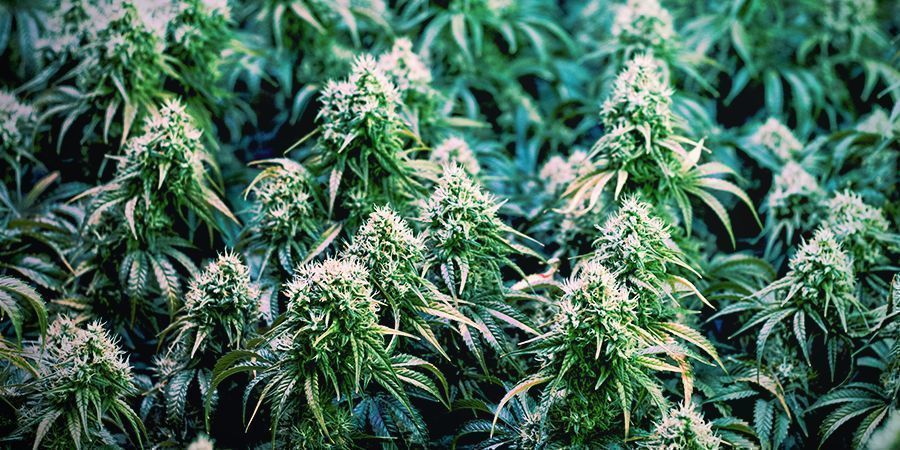
The sea of green method, also known as SOG, involves growing many short plants close to each other in a confined space, and has the explicit intent of making plants flower early. This, as it turns out, is done so each plant will develop one large cola instead of numerous small buds.
Rather than a particular time, you'll want to wait for your plants to reach around 15–30cm in height before flipping. The specific height, of course, will depend on your plant's potential maximum.
-
Screen of Green (ScrOG)
Bearing a similar acronym, but looking quite different, the screen of green growing method involves placing a mesh screen 30–60cm above the base of your plants. ScrOG facilitates proper aeration, even light exposure, and larger yields as a result.
Since you're not trying to induce flowering early with ScrOG, you'll want to wait a few weeks longer than you would when employing the SOG method.
-
Lollipopping
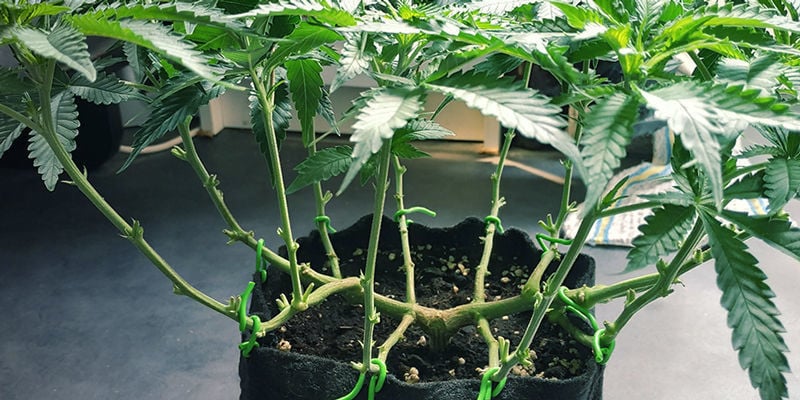
Another fascinating method of maximising yields, lollipopping involves stripping branches of everything but the topmost growth. Proponents of this method point out how these lower sections produce small buds that waste nutrients and energy. Nobody will want to use these, so those sections are pruned to divert energy and nutrition to the buds on top.
When lollipopping, you'll want to wait for strain-dependent height milestones before you make the flowering switch. Sativas are cut off early and switched to bloom when they hit 30–45cm, while indicas can keep growing until they hit 100cm.
-
Super Cropping
Good things come to those who wait, and that's especially true of those who employ the super cropping method. This strategy sees growers getting the most out of each plant, bending the upper branches down to give the lower buds more light. Along with helping those lower sections, this process also keeps the plant from getting too tall too quickly, allowing for a longer vegetative stage than average.
How to Flip From Veg to Flower Indoors
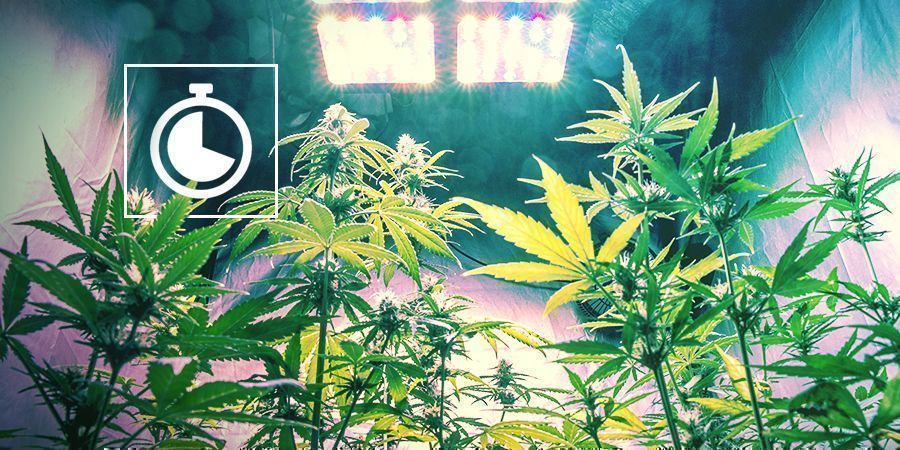
Now, with all that considered, it's time to learn how to make cannabis plants switch from the vegetative to flowering stage in the grow room.
So, during the vegetative stage, most growers keep a light schedule of 18 hours on and 6 hours off. As their plants become fully ready for the flowering stage, adjustments need to be made so they get 12 hours of darkness. This means you'll want to adjust the timer you have your light system hooked up to.
Once that's done, just keep taking care of your plants like you have, and rest assured they'll keep growing healthily throughout the flowering stage.
Switching From Veg to Flower Outdoors
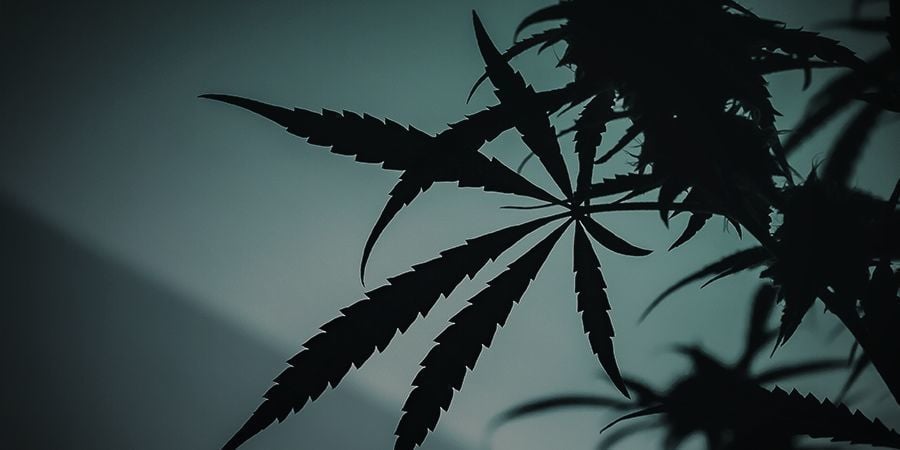
Now, normally, as we brought up towards the beginning, outdoor growers won't have to worry about inducing bloom. Those who want to have a second growing cycle (or an earlier harvest), however, can still manipulate light and switch to the flowering stage sooner.
Growers can accomplish this by building a structure with a removable light-proof cover over and around the plants. If you keep them covered for 12 hours a day (after they've properly developed), you can go ahead and kiss the vegetative stage goodbye.
Be careful when trying this, though. If you aren’t consistent with your light-deprivation schedule, the extra light will make plants leave the flowering stage and go right back to the vegetative stage.
When to Flip if Plants Are Growing Unevenly
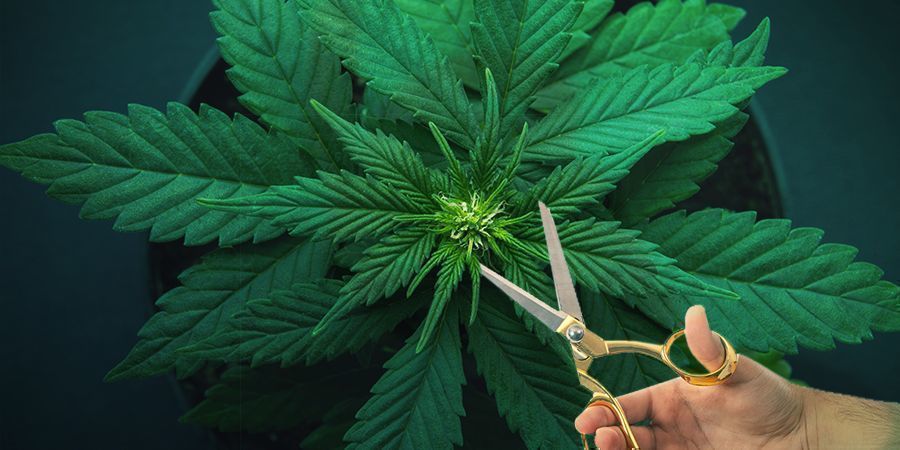
Now, say one plant has a different growing speed than the others. If you find that some of your plants are ready to leave the vegetative stage earlier, some topping and pruning may be in order. These strategies can get a plant to grow like the others, meaning all your plants can then enter the flowering stage together.
Growers should exercise these methods with discretion, as plants will offer reduced yields if stress piles up. Keep a close eye on each plant, and make sure you're not just pushing your plants to flowering for a quicker harvest. It may come quicker, but it'll be poor-quality and light, costing you more money and time in the long-run.
Can You Switch to the Flowering Phase Right After Topping?
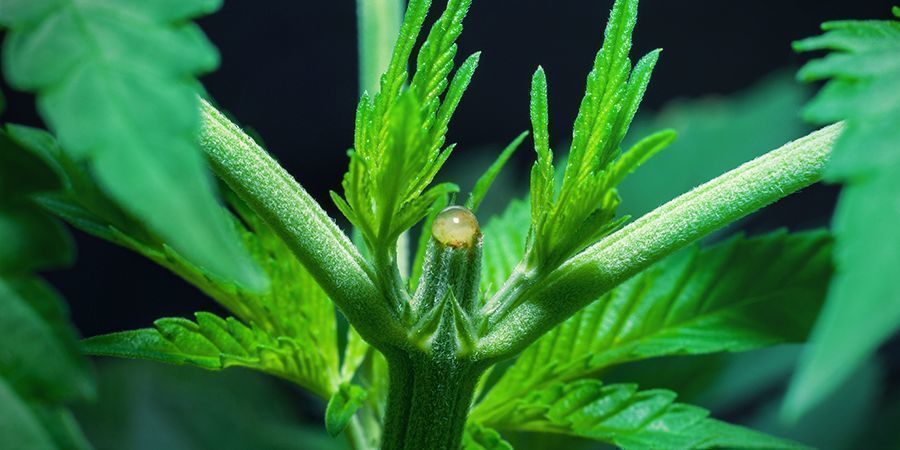
Lastly, speaking of stress and topping, some wonder whether they should make the switch to the flowering stage right after topping their plants. Unlike most of what we've discussed here, there are different opinions depending on who you ask. To illustrate our take, we'll focus on the cannabis plant itself and consider its “feelings”.
Ultimately, the growing process is stressful in general for your plants. This stress is only heightened for a plant that goes through topping. However, the light shift and the beginning of flowering is one of the most stressful times for any plant.
Considering this, the majority of growers will tell you to wait 1–2 weeks between the end of topping and the beginning of flowering. A decent amount of growers, however, believe a plant can handle the transition with only 5–7 days of recovery. Each plant should make it to harvest in good health, but the plant that got less than a week may offer a less impressive yield. Beyond that, it's up to your time constraints and the health of your cannabis.
-
 7 min
11 November 2021
How The Light Spectrum Affects Cannabis
Cannabis is a sun-loving plant. But growing great weed indoors is about more than just sticking a plant under a strong light and hoping for the best. In this article, we'll teach you all there is...
7 min
11 November 2021
How The Light Spectrum Affects Cannabis
Cannabis is a sun-loving plant. But growing great weed indoors is about more than just sticking a plant under a strong light and hoping for the best. In this article, we'll teach you all there is...
-
 7 min
4 June 2021
5 Problems That Can Occur During Cannabis Flowering
Getting the very best out of your bud requires care and attention. But then, why else would you be growing? From ensuring adequate nutrient levels and lighting conditions to the best ways to cover...
7 min
4 June 2021
5 Problems That Can Occur During Cannabis Flowering
Getting the very best out of your bud requires care and attention. But then, why else would you be growing? From ensuring adequate nutrient levels and lighting conditions to the best ways to cover...
-
 3 min
17 October 2019
ScrOG Vs. SOG: Which Is Right For You?
When it comes to growing cannabis, advanced techniques like ScrOG and SOG can really help growers make the most of their plants. So let’s take a look at them both.
3 min
17 October 2019
ScrOG Vs. SOG: Which Is Right For You?
When it comes to growing cannabis, advanced techniques like ScrOG and SOG can really help growers make the most of their plants. So let’s take a look at them both.
-
 3 min
26 January 2018
The Different Stages Of Growing Cannabis And Why They Matter
The transformation of the cannabis plant from start to finish is a joyous and sometimes arduous process. Like other living organisms, cannabis plants experience specific stages of growth. Here's...
3 min
26 January 2018
The Different Stages Of Growing Cannabis And Why They Matter
The transformation of the cannabis plant from start to finish is a joyous and sometimes arduous process. Like other living organisms, cannabis plants experience specific stages of growth. Here's...
-
 3 min
24 June 2016
7 Common Causes Of Stress For Your Cannabis Plant
Occasional stress on your plants is no reason to panic. However, some types of stress can severely affect your plants’ health. Here are the 7 most common causes.
3 min
24 June 2016
7 Common Causes Of Stress For Your Cannabis Plant
Occasional stress on your plants is no reason to panic. However, some types of stress can severely affect your plants’ health. Here are the 7 most common causes.
-
 4 min
24 April 2016
Top 10 Most Common Grower Mistakes
Easy to learn but hard to master, cannabis cultivation is an art form. A lot of learning comes from trial and error; however, avoiding these errors can make things a lot easier!
4 min
24 April 2016
Top 10 Most Common Grower Mistakes
Easy to learn but hard to master, cannabis cultivation is an art form. A lot of learning comes from trial and error; however, avoiding these errors can make things a lot easier!
-
 2 min
30 November 2015
Growing Indoors Vs. Outdoors: The Pros And Cons
There are some significant differences between growing cannabis indoors and outdoors. Knowing them can help you decide which is best for you.
2 min
30 November 2015
Growing Indoors Vs. Outdoors: The Pros And Cons
There are some significant differences between growing cannabis indoors and outdoors. Knowing them can help you decide which is best for you.












 United States
United States










